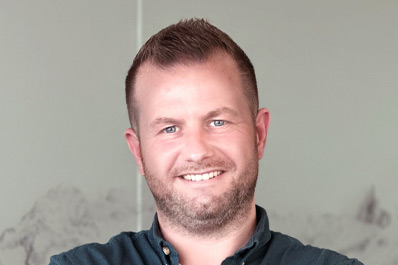Feed Chutes
Water-cooled feed chute in waste-to-energy plants
Water-cooled feed chutes are often used as an important component of the “waste feed” subsystem. Here, the heat that arises in the event of a possible backfire is dissipated via the water-cooled outer walls. Experience has shown that common cooling systems are not able to cope with all opearting conditions. For example, steam bubbles can form during back fires, leading to local thermal overheating and deformation of the inner and outer walls. The stringent requirements regarding corrosion and abrasion are also not always met.
Requirements and
Challenges
Thermal loads due to backfiring:
Backfiring often results in very high local thermal stresses leading to deformations. With an insufficient cooling, there is also the risk of damage due to steam formation and steam hammering in the cooling system. Cooling systems without forced circulation are prone to fail under these circumstances. If steam bubbles form in these systems, the cooling capacity will be locally reduced significantly. Material overheating and damage can be the result.
Biological contamination of cooling water:
Bacteria can develop in cooling water, posing a health risk on contact. Biocides prevent this development, but they are only economically applicable in closed systems.
The EnergieLink solution
The feed chute with closed cooling circuit
The design of the cooling circuit, in terms of mechanics as well as process, allows steam bubbles produced during a backfire an easy rise out of the feed chute avoiding overheating is.Cooling water flows through each segment individually, and the flow rate per segment as well as the temperature at the cooling water outlet are monitored. So, a heat source can be localized at an early stage in the event of a possible backfire, an alarm triggered and countermeasures initiated. Thanks to this early detection, severe backfires are very rarely to be expected. If this should nevertheless occur, a replenishment of cold cooling water is activated. In most cases, the heat is distributed via the cooling system – this is sufficient for small back fires..
Wear-resistant materials are used wherever necessary. The surfaces facing the waste, are made of composite materials, resistant against abrasion and corrosion. These can be customised up to 5 mm.
Easy assembly due to modular design
The individual water-cooled segments in the upper and lower sections can be easily replaced. They are sized in a way that they can be moved into the system segment by segment.
– Modular design
– Corrosion and wear resistant materials
– Closed cooling circuit
– Dosing of corrosion inhibitors and biocides possible
– Additional safety through automatic replenishment of cold fresh water in the event of a sharp rise in temperature
– Uniform flow and monitoring of each segment
– Temperature monitoring per segment, reliable early indication and localisation of a back fire enabling timely initiation of countermeasures
– Rapid reduction of temperature peaks
– Various fire extinguishing systems as option
Your contact person

Patrick Schmidt
Project Manager & Sales
Tel +41 76 571 23 74